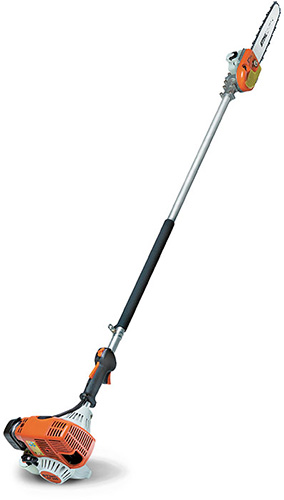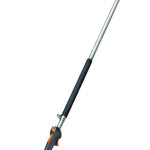Pole Pruners and Safety
Powered pole pruners make it possible to cut high-up limbs, branches, and vines that you'd otherwise need a ladder to reach. Pole saws are a useful tool, but only if you learn how to use them safely before you start cutting with them for the first time.
 First, choose a pole saw that is comfortable for you to use. You need something powerful enough to cut the limbs you're taking down, but light-weight enough that it won't tire you out. Cutting when you're tired increases the risk of injury. Brands like Stihl and Echo offer several styles so you can find the one that works just right for you.
First, choose a pole saw that is comfortable for you to use. You need something powerful enough to cut the limbs you're taking down, but light-weight enough that it won't tire you out. Cutting when you're tired increases the risk of injury. Brands like Stihl and Echo offer several styles so you can find the one that works just right for you.
 First, choose a pole saw that is comfortable for you to use. You need something powerful enough to cut the limbs you're taking down, but light-weight enough that it won't tire you out. Cutting when you're tired increases the risk of injury. Brands like Stihl and Echo offer several styles so you can find the one that works just right for you.
First, choose a pole saw that is comfortable for you to use. You need something powerful enough to cut the limbs you're taking down, but light-weight enough that it won't tire you out. Cutting when you're tired increases the risk of injury. Brands like Stihl and Echo offer several styles so you can find the one that works just right for you.
Safety Gear
Always wear eye protection when operating a pole saw. You'll need to look up at the cutting head and limb to see what you're doing, and you don't want sawdust and wood chips falling into your eyes. GreenIndustryPros.com lists the following as essential personal protective equipment for operating a pole saw:- Eye protection
- Hearing protection
- Helmet
- Non-slip work gloves
- Non-slip work shoes (steel-toed boots advised)
- Long pants (leg chaps also advised)


